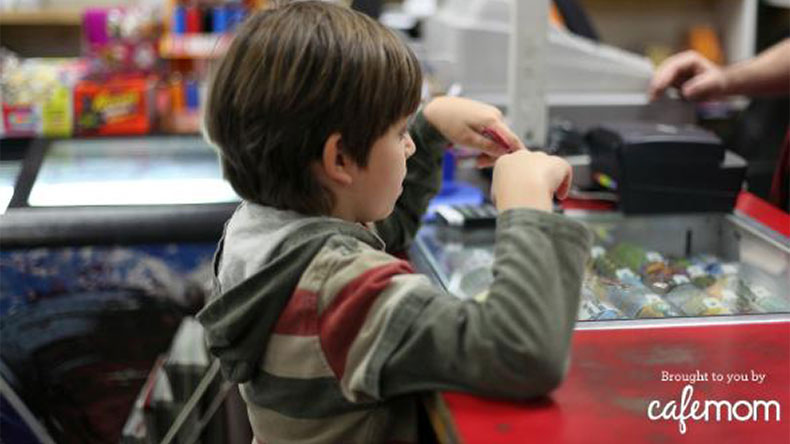6 Ways to Tame Materialism in Kids

6 Ways to Tame Materialism in Kids
Expert tips to help kids of all ages focus on what really matters
For some kids, it seems the more they get, the more they want. But whatever the source of their burning need to Acquire All the Things -- peers, advertisements, maybe even you -- there are a variety of ways to keep that impulse under control. Here are six ways to cure your kids of the gimmes:
- Model non-materialistic behavior. Kids who watch their parents obsessing over material goods (and/or always insisting they have the latest/greatest/nicest versions of everything) will be more likely to act that way too. “If you place a high value on a new car, phone, coat, or vacation and do not express delight and joy over the simple and free things in life, like a beautiful view, a lovely song, a piece of art, or a great story, your child will mimic these behaviors and values,” says Debbie Pincus, LMHC, a parenting and marriage coach. It’s OK to like what you like, but watch how you express it and what message that sends to your children.
- Choose experiences over “stuff.” If kids are used to receiving tangibles at every turn, that’s all they know to expect. To turn the situation around, make an effort to emphasize experiences instead of purchased goods. Give kids the gift of an activity or an adventure instead of new things, and when you attend events, make a point to enjoy them for what they are instead of treating them as just another place to buy merchandise. “Be generous in sharing your values, experiences, and time with your children,” says Pincus. “Parenting with this perspective in mind is far more effective than parenting by a wallet.”
- Do charity work. A side effect of helping less-fortunate people is that it puts everything else into perspective. Kids who learn about and/or see others who have less will hopefully find it harder to be greedy in general. They may also be more grateful for what they have, and more generous in sharing it. “As parents, we can nurture an interest in giving and reaching out to others,” says author Susan Smith Kuczmarski, EdD. “Acts of service and kindness free us and our kids from self-imposed me-focused lives by widening our circles of compassion.” Whether it’s buying toys for needy children, helping build a house for a deserving family, or serving food at a local shelter, there are many ways to get kids involved in charity work.
- Give thoughtful gifts. Kids who learn to give thoughtful gifts will be more likely to appreciate receiving them as well. Making gifts for others is one way to teach your kids the true spirit of giving and receiving, and once they’ve put their own effort into handcrafting something special for someone, they might be less likely to roll their eyes the next time they unwrap a hand-knit scarf from Aunt Millie. And of course a gift doesn’t have to be handmade to be special. “Encourage your children to really think about what would make a receiver happy,” advises Pincus. “Gifts from the heart teach children kindness and empathy,” she says, in addition to shifting the focus from material objects.
- Don’t spoil them. As parents, it’s important to find a balance between being generous with our kids and spoiling them. No one can deny the joy we feel in seeing our children’s eyes light up when they get something they want, but we should take care to resist the urge to overdo it just because we are addicted to the pleasure of giving or because we don’t want to disappoint them. “We want to give our children what makes them happy ... and when we’re unable (or even when we’re unwilling) to buy the latest and greatest, we often feel terribly guilty,” says Pincus. She advises parents to ask themselves questions like, “Am I buying this item for my child because I don’t want him/her to be alienated by friends for not having it or because I don’t want him/her to be upset with me?” and then follow that with, “Are those good reasons to go ahead with the purchase?” Margaret Hannah, of William James College, says that although peer influence becomes more significant as tweens and teens increasingly compare themselves to others, “family values are always the best influence on children.”
- Make them pay. The best way to teach kids the value of a dollar is to have them spend (and possibly also earn) their own money. Knowing the price of things goes a long way toward teaching kids the difference between cost and value. When the child herself is the one paying the bill, sometimes the cost of buying those brand-name shoes feels much higher than their actual value. In time, maybe your kid will come to realize that sometimes the most important things in life turn out to be free, and also priceless.
How do you work to curb materialism in your kids?
Click here for the full article on the P&G Everyday website.
- Tags:
- In the News
Topics/Tags
Follow William James College
Media Contact
- Katie O'Hare
- Senior Director of Marketing
- katie_ohare@williamjames.edu
- 617-564-9389
